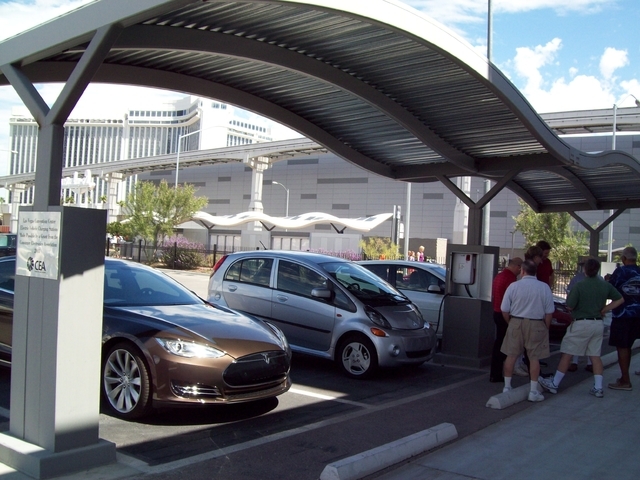Drive Plugged In Column 100a Electric Car Jargon
When shopping for a new car, consumers are finding a wider range of technologies. New technologies are often accompanied by mystifying terminologies, measurement units, and an alphabet soup of acronyms. This is especially true of electrified drivetrains that have added performance and efficiency to gasoline/electric hybrid vehicles.
Two new terminologies were created to describe this new amalgam: a plug-in hybrid electric vehicle, or PHEV, and extended range electric vehicle, or EREV. There are also battery-powered electric vehicles, or BEV, and now hydrogen-powered fuel-cell electric vehicles, or FCEV.
PHEV, EREV, BEV and FCEV all use an electric motor to drive the wheels of a car and share the generic acronym for an electric vehicle, or EV. Any vehicle that does not use gasoline or diesel fuel to propel the wheels of a vehicle is called an alternative-fuel vehicle, or AFV. Any vehicle that does not emit toxic chemicals at its tailpipe is called a Zero Emission Vehicle, or ZEV.
This month’s column will attempt to survey some of the more common acronyms, jargon and terminologies that are used to describe new types of plug-in electric drivetrains:
AC Induction Motor uses alternating current from an electronic inverter module to create an internal magnetic field that spins the rotor to turn the wheels of the car.
Amp or Ampere is a unit of measurement for the amount of electric current flowing through an electric circuit.
EVSE is an acronym for Electric Vehicle Supply Equipment and usually denotes a peripheral device that supplies electric power to recharge an electric vehicle’s traction battery pack from the utility grid.
Popular jargon calls this equipment a “charging station”.
KW is an acronym for kilowatts, a measuring unit for electric power in 1,000-watt increments.
KWH is an acronym for kilowatt-hours, a measuring unit for the energy storage capacity of a battery pack that describes the amount of power it can provide over time, specifically the number of kilowatts that the combined battery cells can provide to the electric motor of the car for one hour.
Li-ion is a shorthand abbreviation for lithium-ion battery cells. A lithium ion is a lithium atom that either has one less electron or one extra electron.
An ion that is missing an electron tends to travel to the negative terminal, or cathode, of a Li-on battery cell while an ion that has an extra electron tends to travel to the positive terminal, or anode, of a battery cell. By using ion exchange between the battery cells, Li-ion battery cells use less heat during ion transfer than traditional batteries and achieve about four times the power density compared to lead-sulfuric acid battery cells of the same weight.
RPM or Revolutions Per Minute is a measuring unit for rotating systems, including the rotational speed of an electric motor.
Volt is a unit of measurement that describes the potential electromotive force of a battery storage cell, as well as the amount of these units that it will take to drive an electronic circuit.
Watt is a unit of measurement for electric power.
Stan Hanel has worked in the electronics industry for more than 30 years and is a longtime member of the Electric Auto Association and the Las Vegas Electric Vehicle Association. Hanel writes and edits for EAA’s “Current Events” and LVEVA’s “Watts Happening” newsletters. Contact him at stanhanel@aol.com.
















